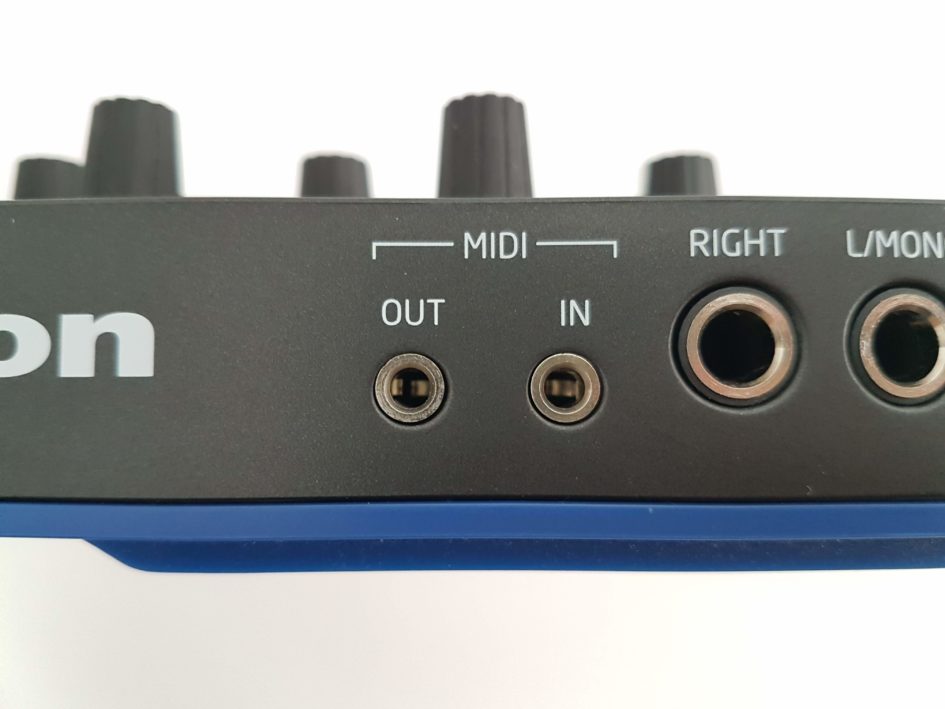Have you asked yourself:
“How to connect my new device with 3.5 mm MIDI jacks to my other MIDI gear?”
Or maybe you are just wondering:
“Why my devices with 3.5 mm MIDI jacks won’t work with each other?”
Following post will help you to understand the subject of 3.5 mm jack sockets marked ‘MIDI In’ and ‘MIDI Out’.

DIN MIDI
Standard DIN MIDI cable requires only 3 electrical connections. Pinout is as follows:
- 1 – unused
- 2 – connection to the shield of the cable (connected only on one end of the cable)
- 3 – unused
- 4 – (+5V) current from transmitting device
- 5 – current return from receiving device
DIN sync standard uses all 5 pins but this is a separate topic.

3.5 mm jack
MIDI does not need 5 electrical connections that standard 5-pin DIN connector provides. Why not change it to something different? Around year 2010 manufacturers came to conclusion that they need to make grooveboxes and synthesizers more portable. In order to do so they decided that it will be a good idea to swap DIN MIDI In and Out ports for something smaller. (And get rid of a dedicated MIDI Thru socket). 3.5 mm TRS jack have exactly 3 electrical connections (Tip, Ring and Sleeve) and is smaller than 5-pin DIN. That is how 3.5 mm MIDI jack was created.
Polarity problems
MIDI Association has released a spec sheet in September 2018. Before it happened there was no standard for wiring MIDI jack connectors and some manufacturers took different approaches. MIDI Associations marks two different 3.5 mm TRS MIDI jack wirings one as ‘TRS MIDI A’ and second as ‘TRS MIDI B’. [‘TRS MIDI A’ wiring has been chosen as standard now]. For example Akai, Korg and Make Noise uses ‘TRS MIDI A’ wiring, whereas Arturia and Novation implements ‘TRS MIDI B’ wiring. This is very unfortunate for the users and can be confusing. Luckily for the customers – so far almost all manufacturers have decided to include adapters from 3.5 mm jack to standard DIN MIDI connectors. Some devices also offer a switchable polarity.
| DIN MIDI pin | TRS MIDI A | TRS MIDI B |
| 2 (Shield) | Sleeve | Sleeve |
| 4 (Current Source) | Ring | Tip |
| 5 (Current Sink) | Tip | Ring |

If you don’t want to use too many adapters between two devices that implements different TRS wiring – the easiest solution would be to make yourself a dedicated jack-jack cable. Wiring schemes for different types of TRS MIDI connectors are available in the table above.
Side note
3.5 mm MIDI jacks should not be confused with Sync (Korg) or CV/Gate/Clock jacks present of various modular and semi-modular synthesizers and sequencers.
There is a list containing modules and devices that uses 3.5 mm MIDI jacks.

Leave a Reply